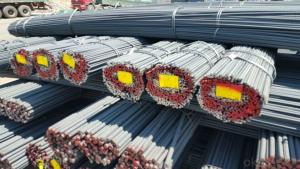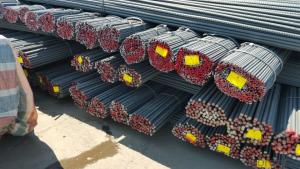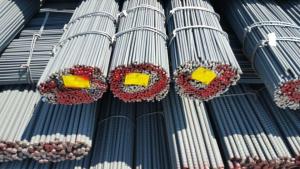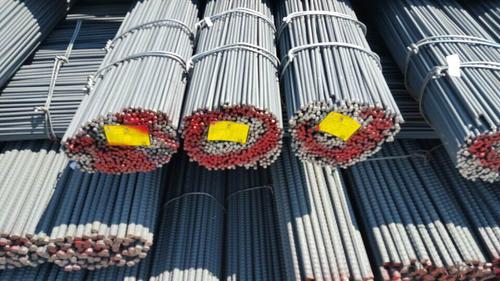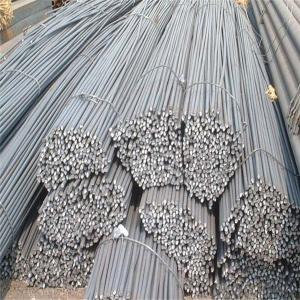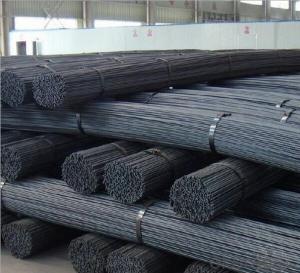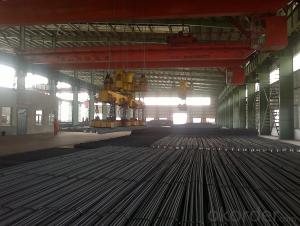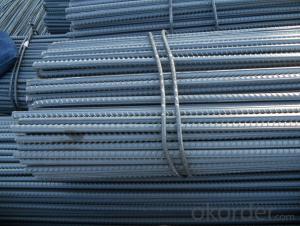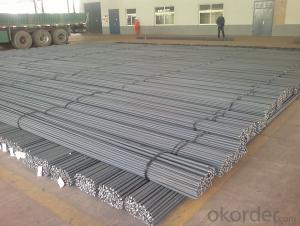Reinforcing Deformed Steel Bars in Grade HRB400
- Loading Port:
- Tianjin
- Payment Terms:
- TT OR LC
- Min Order Qty:
- 25 m.t.
- Supply Capability:
- 20000 m.t./month
OKorder Service Pledge
OKorder Financial Service
You Might Also Like
Specification
OKorder is offering high quality Hot Rolled Rebars at great prices with worldwide shipping. Our supplier is a world-class manufacturer of steel, with our products utilized the world over. OKorder annually supplies products to Africa, North American and Asian markets. We provide quotations within 24 hours of receiving an inquiry and guarantee competitive prices.
Product Applications:
Deformed bar is widely used in buildings, bridges, roads and other engineering construction. Big to highways, railways, bridges, culverts, tunnels, public facilities such as flood control, dam, small to housing construction, beam, column, wall and the foundation of the plate, deformed bar is an integral structure material. With the development of world economy and the vigorous development of infrastructure construction, real estate, the demand for deformed bar will be larger and larger.
Product Advantages:
OKorder's Hot Rolled Rebars are durable, strong, and resist corrosion.
Main Product Features:
· Premium quality
· Prompt delivery & seaworthy packing (30 days after receiving deposit)
· Corrosion resistance
· Can be recycled and reused
· Mill test certification
· Professional Service
· Competitive pricing
Product Specifications:
Manufacture: Hot rolled
Grade: HRB400 – HRB500
Certificates: ISO, SGS, BV, CIQ
Length: 6m – 12m, as per customer request
Packaging: Export packing, nude packing, bundled
Grade | Technical data of the original chemical composition (%) | ||||||
C | Mn | Si | S | P | V | ||
HRB400 | ≤0.25 | ≤1.60 | ≤0.80 | ≤0.045 | ≤0.045 | 0.04-0.12 | |
Physical capability | |||||||
Yield Strength (N/cm²) | Tensile Strength (N/cm²) | Elongation (%) | |||||
≥400 | ≥570 | ≥14 | |||||
Theoretical weight and section area of each diameter as below for your information:
Diameter(mm) | Section area (mm²) | Mass(kg/m) | Weight of 12m bar(kg) |
6 | 28.27 | 0.222 | 2.664 |
8 | 50.27 | 0.395 | 4.74 |
10 | 78.54 | 0.617 | 7.404 |
12 | 113.1 | 0.888 | 10.656 |
14 | 153.9 | 1.21 | 14.52 |
16 | 201.1 | 1.58 | 18.96 |
18 | 254.5 | 2.00 | 24 |
20 | 314.2 | 2.47 | 29.64 |
22 | 380.1 | 2.98 | 35.76 |
25 | 490.9 | 3.85 | 46.2 |
28 | 615.8 | 4.83 | 57.96 |
32 | 804.2 | 6.31 | 75.72 |
36 | 1018 | 7.99 | 98.88 |
40 | 1257 | 9.87 | 118.44 |
50 | 1964 | 15.42 | 185.04 |
FAQ:
Q1: Why buy Materials & Equipment from OKorder.com?
A1: All products offered by OKorder.com are carefully selected from China's most reliable manufacturing enterprises. Through its ISO certifications, OKorder.com adheres to the highest standards and a commitment to supply chain safety and customer satisfaction.
Q2: How do we guarantee the quality of our products?
A2: We have established an advanced quality management system which conducts strict quality tests at every step, from raw materials to the final product. At the same time, we provide extensive follow-up service assurances as required.
Q3: How soon can we receive the product after purchase?
A3: Within three days of placing an order, we will begin production. The specific shipping date is dependent upon international and government factors, but is typically 7 to 10 workdays.
Q4:What's your payment terms ?
A4:Mostly,we collect the money by T/T and LC at sight . We also accept time LC at 90/120 days sight.
Images
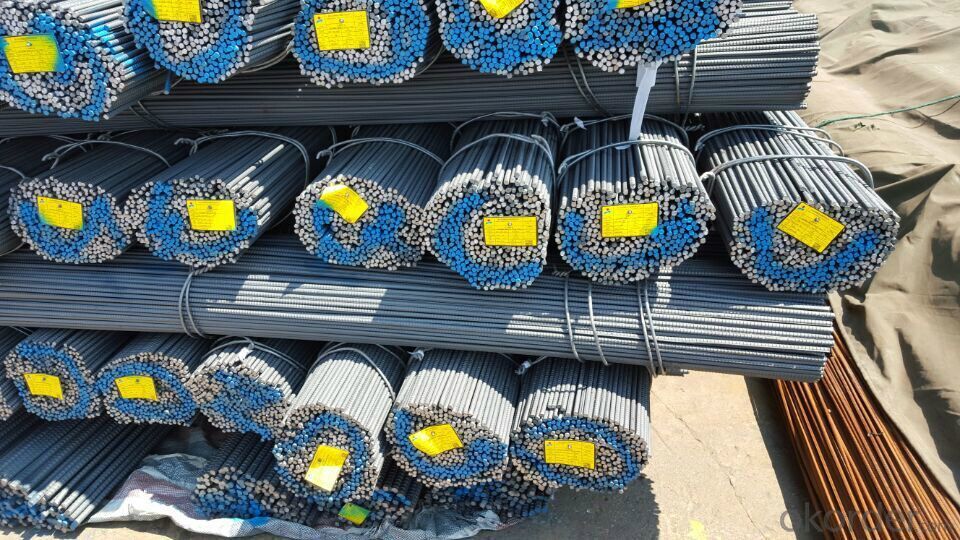
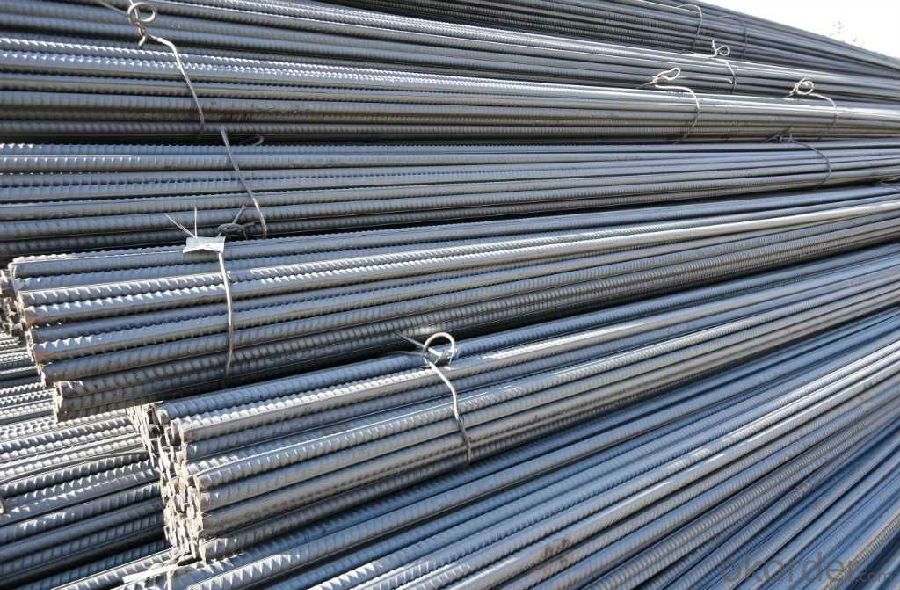
- Q: Are steel rebars suitable for use in seismic zones?
- Yes, steel rebars are suitable for use in seismic zones. They are commonly used in construction to enhance the strength and durability of concrete structures, making them more resistant to seismic forces. The added reinforcement provided by steel rebars helps prevent concrete from cracking or collapsing during an earthquake, ensuring the safety and stability of the building.
- Q: How are steel rebars marked for identification on construction sites?
- Steel rebars are typically marked with a series of symbols, numbers, and colors to identify their size, grade, and other specifications. These markings are usually either painted or embossed on the surface of the rebars, making it easier for construction workers to identify and use them correctly during the construction process.
- Q: What are the common problems associated with steel rebars in concrete structures?
- Steel rebars in concrete structures can encounter numerous issues, including corrosion, inadequate cover, improper placement, and improper anchorage. Corrosion is a major concern as it weakens rebars when they are exposed to moisture and oxygen, particularly in coastal areas or regions with high humidity. This can lead to structural deterioration and reduced load-bearing capacity. Insufficient concrete cover over rebars, known as inadequate cover, is another problem. This can arise from construction practices or design errors. Inadequate cover increases the risk of corrosion as the rebars are exposed to external elements. It can also compromise the concrete's structural integrity, especially in terms of fire resistance and durability. Improper placement of rebars can also cause issues. If they are not aligned or spaced correctly according to design specifications, weak sections can form within the concrete. This can lead to uneven load distribution and potential structural failure. It can also diminish the effectiveness of rebars in reinforcing the concrete, compromising the overall strength of the structure. Improper anchorage of rebars is a common problem as well. Adequate anchorage is crucial for transferring loads between different sections of the concrete structure. If rebars are not properly anchored, they may slip or pull out under stress, reducing the structural strength and stability of the concrete. To address these problems, it is vital to implement proper construction practices and adhere to design specifications. This includes ensuring sufficient concrete cover, accurate placement and alignment of rebars, proper anchorage, and the use of corrosion-resistant rebars or protective coatings in corrosive environments. Regular inspections and maintenance are also necessary to detect and address any potential issues with steel rebars in concrete structures.
- Q: What are the guidelines for reinforcing concrete slabs with steel rebars?
- When reinforcing concrete slabs with steel rebars, there are several important factors to consider. Firstly, the required amount of reinforcement must be determined based on the load that the slab will bear. This load can be calculated using structural engineering principles and taking into account factors such as the intended use of the slab, the weight of any equipment or vehicles that will be placed on it, and any applicable building codes or regulations. Once the necessary amount of reinforcement is determined, the next step is to design the layout of the rebars. This involves spacing them at specified intervals to ensure an even distribution of the load across the slab. The spacing will vary depending on the thickness of the slab, with thicker slabs generally requiring more rebars. It is also important to include minimum clearances between the rebars and the edges or bottom of the slab to prevent corrosion and ensure proper concrete cover. The size and type of rebars used is another important consideration. Commonly used types include plain round bars, deformed bars, or welded wire fabric. The diameter of the rebars and the grade of steel should be selected based on the expected load and the requirements of the project specifications or building codes. During the construction process, it is crucial to correctly place and secure the rebars within the formwork to maintain their intended position. This may involve using chairs, spacers, or other devices to ensure proper alignment and prevent displacement. Additionally, care should be taken to avoid damaging the rebars during the pouring and finishing of the concrete. Lastly, it is important to inspect and test the reinforced concrete slab to ensure that the rebars are properly installed and meet the required specifications. This can involve visual inspections, as well as non-destructive testing methods such as ultrasound or ground-penetrating radar to verify the integrity and position of the rebars. In conclusion, adhering to these guidelines for reinforcing concrete slabs with steel rebars will help guarantee the structural integrity and longevity of the slab, while also meeting necessary safety and building code requirements.
- Q: Can steel rebars be used in structures with high moisture content?
- Steel rebars can be used in structures with high moisture content, but they need to be adequately protected against corrosion. Moisture can accelerate the corrosion process, so proper measures such as using epoxy-coated rebars, providing a sufficient concrete cover, and ensuring effective drainage are necessary to prevent damage to the rebars and maintain the structural integrity of the building.
- Q: How are steel rebars measured?
- Steel rebars are typically measured by their diameter and length. The diameter is commonly measured in millimeters or inches, while the length is measured in meters or feet.
- Q: Can steel rebars be used in structures exposed to extreme temperatures?
- Yes, steel rebars can be used in structures exposed to extreme temperatures. Steel has high thermal conductivity, which allows it to transfer heat quickly, minimizing the risk of structural damage due to thermal expansion or contraction. However, it is essential to consider the specific temperature range and the potential impact on the structural integrity of the rebar. In extremely high temperatures, other materials or protective measures may be necessary to ensure the stability and safety of the structure.
- Q: What is the process of threading steel rebars?
- The process of threading steel rebars involves using a specialized machine to cut threads onto the ends of the rebars, which allows them to be easily connected together. This threading process enhances the structural integrity, stability, and overall strength of the rebars when used in construction projects.
- Q: Can steel rebars be used in both residential and commercial construction?
- Yes, steel rebars can be used in both residential and commercial construction. Steel rebars are commonly used as reinforcement in concrete structures to provide added strength and durability. They are suitable for a wide range of applications, including foundations, walls, columns, beams, and slabs, which are common elements in both residential and commercial construction. The use of steel rebars ensures that the concrete structures can withstand the loads and stresses imposed on them, making them suitable for various construction projects, regardless of their scale or purpose.
- Q: What are the standard sizes for steel rebars?
- The standard sizes for steel rebars typically range from #3 to #18, with diameters ranging from 3/8 inch to 2 1/4 inches.
Send your message to us
Reinforcing Deformed Steel Bars in Grade HRB400
- Loading Port:
- Tianjin
- Payment Terms:
- TT OR LC
- Min Order Qty:
- 25 m.t.
- Supply Capability:
- 20000 m.t./month
OKorder Service Pledge
OKorder Financial Service
Similar products
Hot products
Hot Searches
Related keywords
